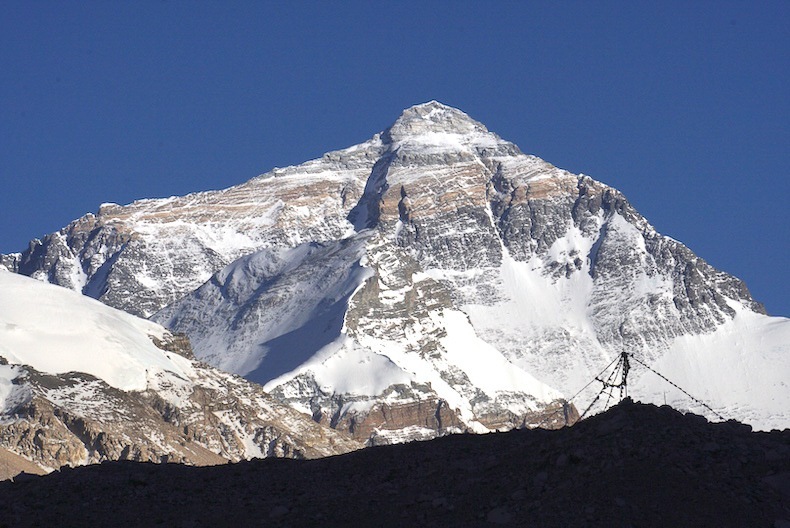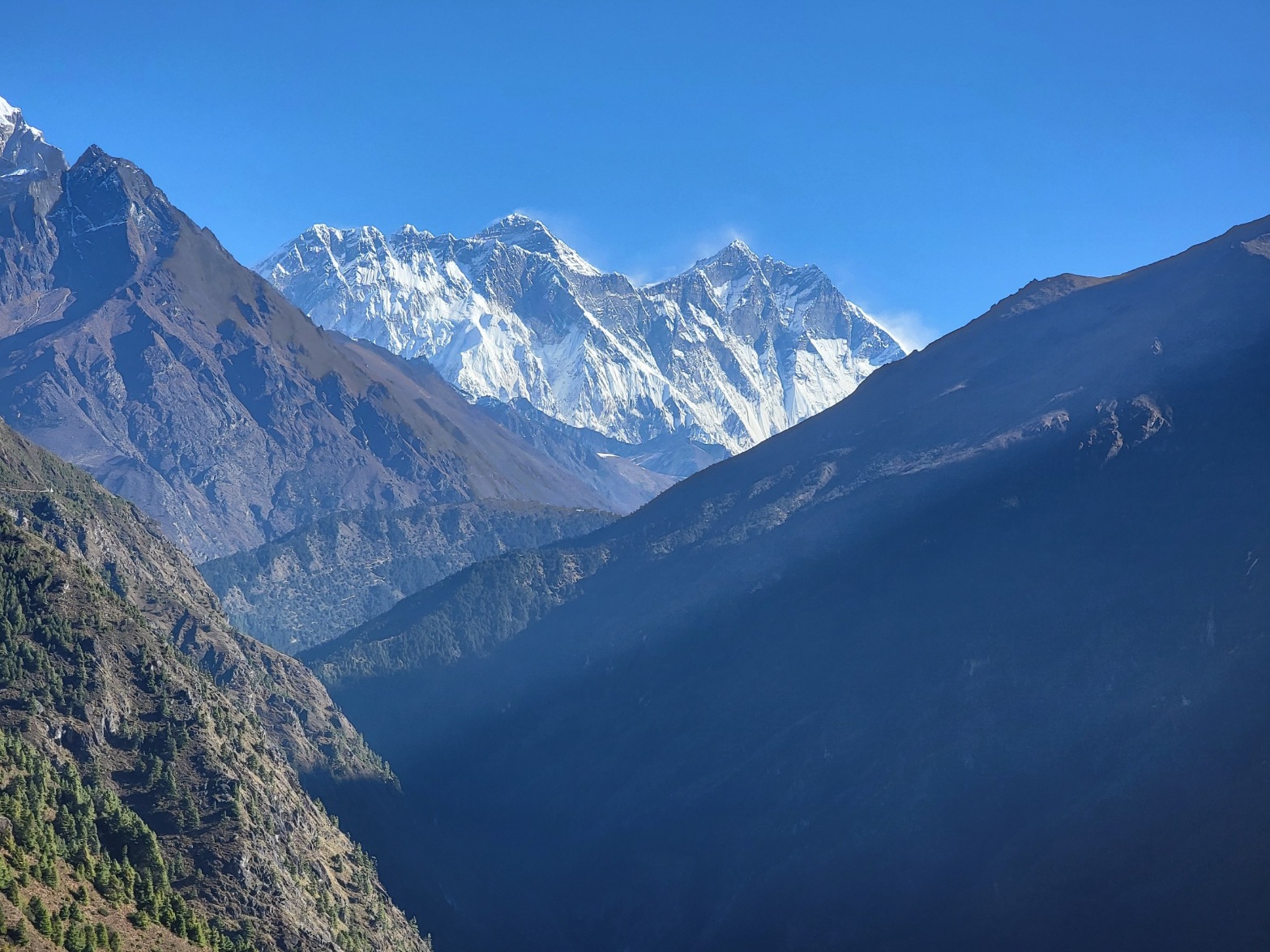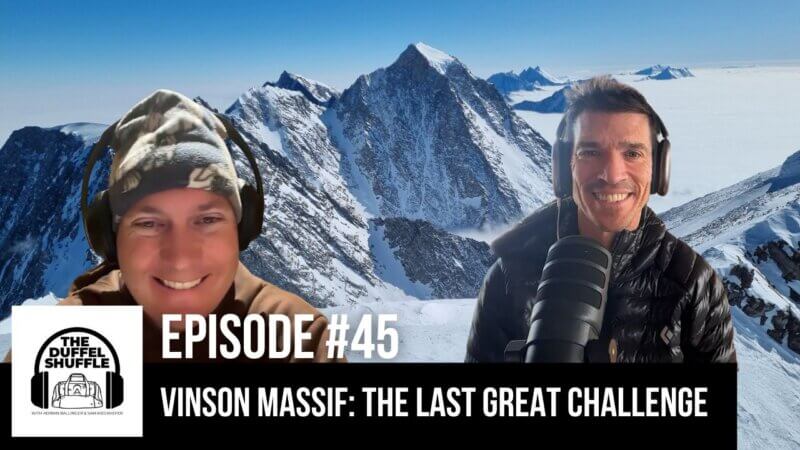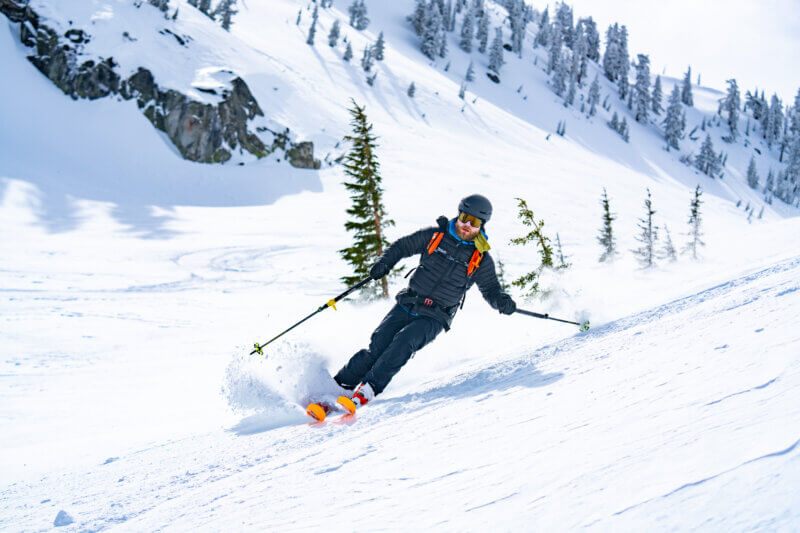Questions To Ask Before Joining An Everest Expedition

Climbing Everest is a giant investment of money, time, and training. Choosing which guiding company to climb Everest with should be done carefully and after getting answers to all of the questions below.
Here are the top questions you should be asking your guiding company before joining an Everest expedition:
-How many years have they been operating on Everest?
Our founder and lead IFMGA-certified guide, Adrian Ballinger, has been operating on Everest since 2008, with 13 seasons on the mountain. We have not been on Everest since 2019 due to COVID and China closing it’s borders but we will be back on Everest in 2024!
-If you are going with a Western company, who are they using for their Base Camp services? Have they worked together before?
We have worked with Himalayan Vision for our Base Camp services for 5 years.
-Which route do you climb on Everest? And why?
Alpenglow climbs the North Side of Everest for several reasons: Tibet is politically more stable than Nepal, the North Side is less crowded than the South side, we avoid having to cross the Khumbu icefall, there are more reputable and experienced companies climbing on the North Side versus the South.
-Do you have to get to Everest Base Camp on your own or is there a fixed itinerary?
We drive our clients to Everest Base Camp since they will be pre-acclimatized from our Rapid Ascent protocol.
-What experience do you require from your clients to be able to join an Everest expedition?
Alpenglow Expeditions has very strict requirements to become a team member on one of our Everest expeditions, and it takes time to gain the necessary skills and experience. This is a multi-year project for many people, starting with basic climbing instruction at one of our multi-day climbing schools. Afterwards, larger and more complex mountains are attempted, culminating in an expedition to an 8000m peak, which is usually Cho Oyu. After all of this, a climber is now ready to be a team member on an attempt to climb Mt. Everest.
-What all is included and not included in the price of your Everest expedition?
THE COST OF YOUR TRIP INCLUDES YOUR LAND COSTS (EXCLUDING IN-TOWN MEALS). THIS INCLUDES:
All lodging according to itinerary, including double occupancy lodging while in town and group lodging in mountain huts.
Breakfasts in town, all meals while on the mountain
Group camping and climbing equipment
All Tibet travel & climbing permits
Scheduled in-country transportation
Airport transfers
Certified guides
THE COST OF YOUR TRIP DOES NOT INCLUDE:
Flights to/from Chengdu, where the expedition begins.
Additional nights in hotel outside of the itinerary
Airport taxes
Visas
In-town dinners
Immunizations
Tips for guides or local staff
Travel, rescue, or any other type of insurance
Hospitalization or evacuation costs
Single supplement charges
Excess baggage charges
Alcohol
Other personal expenses
Antigen/PCR Covid test cost
The costs of delays or changes to itinerary that are beyond the control of Alpenglow Expeditions or its agents are not included.
-Is there a pre-acclimatization protocol for Everest? Is it included in the price of the trip?
Yes, and it is included in the price of the trip! Rapid Ascent™ is a unique pre-acclimatization program developed by Alpenglow Expeditions. Over the past decade, we’ve perfected our regimen with the help of our expedition doctor and Hypoxico tents to create a cutting-edge, pre-trip hypoxic training protocol that allows our clients to skip the lengthy in-country acclimatization period and start climbing sooner.
-What is your guide to climber ratio? Irrespective of the ratios, what is the maximum number of clients on an Everest expedition?
Our guide to climber ratio is 1:4. All guides are IFMGA-certified or aspirants working towards finishing their certification. This is the lowest member to guide ratio in the Himalaya. Our maximum number of clients for an expedition is 12.
-What’s the experience of your Everest team members?
Our Guide and Sherpa team combined have over 100 summits of Everest, and hundreds more summits of other 8,000m peaks.
-What is your Everest itinerary?
To view our detailed 36-day itinerary, click here!
-What food is provided on Everest? Who is doing the cooking?
Our private, Western-trained cook staff prepares meals of imported and local foods of the highest quality. Alpenglow has the best food on the mountain, ensuring your strength and health throughout the expedition. We are able to accommodate all food allergies and preferences.
-What are the arrangements at ABC (N side) regarding cooking / feeding / mess tent / heater / staff / medical supplies?
Alpenglow prides itself in having the highest-quality accommodations on Everest. We have a well-established ABC, you can expect personal tents, big dome dining and hang-out tent, shower with hot water, inflatable couches, wifi, cell service, heaters, fully trained medical team and supplies, and a private Western-trained cook staff.
-How many Climbing Sherpas are there in the team?
We have a 3:2 Sherpa to climber ratio, ensuring we have the strength necessary to carry loads, set camps, and assist climbers.
-Do the Climbing Sherpas speak English (or your native language)?
Yes, all of our Sherpa speak conversational or fluent English.
-In particular, what is the client to Climbing Sherpa ratio for Everest summit night?
We have a 1:1 ratio during summit push.
-Have the Sherpas worked on Everest before?
All of our Sherpa on Everest have worked with us on many expeditions for many years.
-How many IFMGA-certified guides are there on the team?
Every expedition will have at least 1 IFMGA-certified expedition leader guide.
-Have the guides worked on Everest before?
Yes, all of our Everest guides have worked on Everest for at least 5 seasons.
-Is oxygen provided?
Yes, and it is included in the price!
-How many bottles of oxygen are allocated per person on Everest?
9 bottles of oxygen per climber, 4L per minute. This allows us to use high-flow oxygen sleeping at Camps 2, 3 and 4, and to climb on a higher flow than other expeditions (2L from North Col-C2, and 4L from C2-C3, C3-C4, and C4-Summit-North Col), maximizing safety and success.
-Do your Sherpa & Guides use oxygen on Everest?
Our Sherpa and Guide team also climb and sleep on oxygen, which means they have more strength to focus on you and your ascent. We have as much oxygen as our client, Guides, and Sherpa need to lead a safe and successful expedition.
-How much spare oxygen do the team have on Everest?
We have access to unlimited oxygen in case of emergencies on the mountain.
-Have the regulators been serviced recently?
Yes, we rent Summit Oxygen Systems, which are serviced after every expedition. Every team member gets 2 of each component in case of issues.
-Is a spare mask and regulator carried on summit night?
Yes.
-Is there a trip doctor?
We have a 24/7, on-call expedition doctor, Monica Piris, that has been with Alpenglow for 2 decades. While Dr. Piris does not travel with our team on all expeditions, she is in 24-hour communication with our expedition leaders. Dr. Piris also works with each member on their pre-acclimatization program.
-Does the team carry high altitude med packs?
Yes, every guide has a med kit with all necessary medical supplies.
-Are the Sherpa medically trained?
Yes, they are medically trained at the Khumbu Climbing Center.
-Is there a Base Camp manager who will be available by radio 24hrs for the summit phase?
Yes, we have a 24-hour Base Camp manager on call during the entire expedition.
-What weather forecasting do you use on Everest?
We use a Swiss weather forecasting company. Having a quality forecast for our 8,000m peaks maximizes both our safety and our summit success.
-How often do they get a weather update?
Daily, sometimes multiple times per day depending on the weather conditions.
-Over the last 10 years, what percentage of the team have made it to the summit?
Over 90% of our Everest expedition teams have made it to the summit. Despite some other company’s claims, there is no expedition company that has a 100% summit success rate on Everest.
-If people didn’t summit then why not?
The majority of people who were not able to summit with us were due to inclement weather or sickness (altitude sickness, heart problems, general sickness), which is why we have Dr. Piris on-call 24/7.
-Have they had any Sherpa or client fatalities?
We have never had any client, Guide, or Sherpa fatalities.
We also suggest reaching out to other people who have been on Everest, who didn’t summit and ask them A) which team were they with B) if they would go with them again C) if not, why not and D) if they had the opportunity to go back what would they do differently?
Interested in learning more about Alpenglow’s Mount Everest North Side Rapid Ascent™ Expedition? Visit the Expedition page or fill out an inquiry form now!






